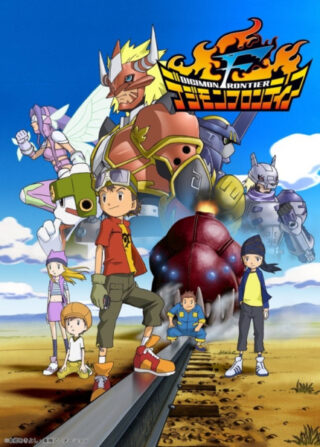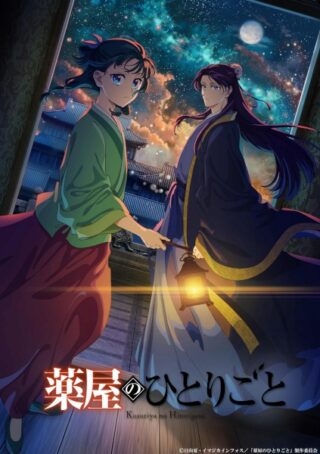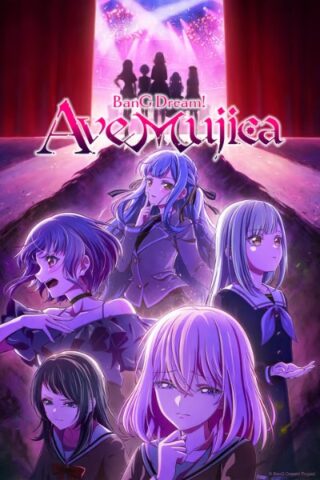Overview:
The BanG Dream! franchise, known for its colorful characters, catchy music, and energetic performances, has always embodied the spirit of youth, friendship, and creativity. Over the years, it has evolved from a simple rhythm game into a full-fledged multimedia universe encompassing anime series, live concerts, mobile games, and character-driven music releases. While the franchise has traditionally embraced a cheerful, vibrant tone with bands like Poppin’Party, Roselia, and Afterglow, BanG Dream! Ave Mujica represents a distinct, bold, and haunting new direction. With its gothic aesthetics, mysterious themes, and emotionally layered storytelling, Ave Mujica stands as one of the most intriguing and innovative projects within the BanG Dream! world.
At first glance, Ave Mujica seems like an enigma: a band shrouded in secrecy, cloaked in dark motifs, and musically distant from the pop-rock rhythms familiar to longtime fans. However, beneath the theatrical visuals and cryptic lyrics lies a powerful narrative about identity, transformation, and the painful search for one’s voice. In this article, we explore every aspect of BanG Dream! Ave Mujica, from its formation and musical direction to its characters, symbolism, and place within the broader franchise.
Introduction to Ave Mujica: Darkness in the Spotlight
Ave Mujica, introduced initially through teaser visuals and mysterious music videos, quickly captivated the BanG Dream! community with its haunting melodies and dramatically different tone. Unlike previous bands in the franchise that celebrated friendship and self-expression through upbeat performances, Ave Mujica presented a narrative rooted in emotional turmoil, self-confrontation, and isolation.
Their debut track, wrapped in ominous instrumentation and poetic sorrow, sent a clear message: this band was not just another colorful addition to the franchise—it was a mirror to the emotional shadows left untouched by other groups. The mystery surrounding their members, combined with thematic depth and visual storytelling, made Ave Mujica more than a band—it became a movement within BanG Dream!.
The Members of Ave Mujica: Hidden Identities and Emotional Echoes
What truly sets Ave Mujica apart is the band’s identity-concealing nature. Each member wears a mask, not just literally but metaphorically, hiding their real names and backgrounds. Initially, fans were only given cryptic names: 𝔏𝔞𝔞𝔫𝔡, 𝔑𝔦𝔳𝔦𝔯𝔞, 𝔐𝔢𝔩, 𝔗𝔞𝔢𝔣𝔢, and 𝔇𝔢𝔦𝔰𝔶𝔢. These gothic monikers contributed to the allure, and speculation soared. It was soon revealed that the members of Ave Mujica are actually existing characters from other BanG Dream! bands, undergoing transformation to reflect their inner struggles.
For instance, fans discovered that LAYER (from RAISE A SUILEN) is one of the key members, her presence indicating a deep inner journey. These masked personas are not alter-egos for performance's sake—they are symbolic representations of emotional states and traumas. Ave Mujica allows its members to express thoughts they cannot share in their usual bands, making the project a form of musical therapy, a raw exhalation of feelings suppressed in their bright, public-facing lives.
The Music of Ave Mujica: A Sonic Departure
Ave Mujica’s music is one of the most distinct elements of the band. Departing from the pop-punk, rock, and synth-pop sounds that dominate other bands in BanG Dream!, their compositions feature dramatic string arrangements, melancholic piano interludes, baroque harmonies, and layers of electronica. It blends J-rock with symphonic metal and gothic influences, evoking comparisons to visual kei and darkwave genres.
Tracks like “Unmei no Triangle” and “Elegy of Rebirth” explore themes of existential dread, regret, and inner rebirth. These songs are not written just to entertain—they are cathartic expressions, unfolding like chapters in a gothic novel. The lyrics, often abstract and philosophical, invite multiple interpretations, making the music emotionally and intellectually engaging.
What makes their sound even more compelling is how it reflects the psychological landscapes of the members. Each song is essentially a diary entry from a character who is struggling with some aspect of their identity—be it failure, envy, loneliness, or emotional numbness. The instruments mimic the chaos and clarity of these states, using minor keys, unconventional progressions, and dissonant crescendos to express what words cannot.
Visual Identity and Aesthetic Symbolism
Visually, Ave Mujica borrows heavily from gothic literature, baroque art, and masquerade ball imagery. The characters wear elaborate costumes—long dark dresses, veils, and ornate accessories. Their masked faces are a key motif, symbolizing anonymity and the fear of vulnerability. Even the band’s logo, written in stylized medieval font, resembles the inscriptions found on ancient tombstones, reinforcing themes of death and rebirth.
Color theory plays a vital role in Ave Mujica’s design. While other bands in the BanG Dream! universe thrive in vivid palettes—neon greens, pastel blues, and cherry pinks—Ave Mujica operates in muted blacks, blood reds, deep purples, and silver. This contrast is not only visual but emotional. It highlights how the band exists in a liminal space between what is said and unsaid, seen and unseen.
Their music videos are cinematic, often resembling abstract short films more than traditional anime clips. Scenes of falling petals, cracked mirrors, burning letters, and collapsing staircases serve as metaphorical devices that deepen the band’s emotional narrative. Each performance is a theatrical confession.
Themes: Duality, Repression, and Catharsis
Ave Mujica doesn’t just sing songs—they tell stories of emotional fractures. A prevailing theme in the band’s journey is duality. Every member of the band is essentially living a double life. By day, they’re part of well-known bands that embody joy, teamwork, and creative unity. By night, they become the shadows of themselves, allowing pain, regret, and doubt to take center stage. This dual identity speaks to a universal human experience: the masks we wear to function and the emotions we suppress to survive.
Another recurring theme is repression. The lyrics often speak of voices that cannot be heard, eyes that refuse to see, and hearts buried under years of guilt or shame. Through Ave Mujica, these hidden layers find expression, transforming repression into catharsis. The act of performance itself becomes a kind of exorcism, where singing a lyric or playing a note is equivalent to bleeding out emotional poison.
Their shows are not celebratory in the traditional sense. Instead, they are immersive rituals, where the audience becomes a witness to something sacred and tragic—a ceremony of emotional purging.
Story Integration in the BanG Dream! Timeline
One of the most interesting aspects of Ave Mujica is how its narrative overlaps with and expands the existing BanG Dream! timeline. While not a separate universe, it is more of a parallel dimension within the franchise. The existence of Ave Mujica raises questions about identity and reality. If a character like Chiyu can exist as both CHU² and another masked persona, what does that say about the multiplicity of the self?
The anime segments, which introduce Ave Mujica’s story arcs, often carry a different tone—quieter, slower-paced, and introspective. The band doesn't seek popularity or fandom but seems to exist out of necessity—because these feelings, these songs, must come out or they will consume the characters from the inside.
Even interactions between Ave Mujica and other bands reflect this delicate tension. While Poppin’Party members may struggle to understand their shift, Roselia’s members perhaps recognize the weight of artistry in darkness. These moments allow the franchise to explore complex emotional dynamics while keeping its interconnectedness alive.
Fan Reception and Cultural Impact
Ave Mujica has sparked some of the most passionate discussions in the BanG Dream! community. Fans are drawn not just to the band’s music, but to the underlying story and the emotional truth it seeks to expose. For some, Ave Mujica’s songs are a source of comfort during dark times. For others, they offer intellectual and artistic stimulation, showcasing how far anime-related music projects can go in terms of narrative ambition and emotional resonance.
Merchandise and live concerts have also contributed to their growing cult status. The live shows, in particular, are spectacles. Unlike the colorful glowsticks and upbeat cheers seen at other BanG Dream! concerts, Ave Mujica’s audience is often bathed in violet light, swaying slowly to the music in a kind of synchronized lament. It’s performance art as much as it is music.
The Future of Ave Mujica: What Lies Beyond the Mask
As of this season, Ave Mujica’s future seems both promising and unpredictable. The band has carved a unique identity within the BanG Dream! universe, but the path forward will depend on how the creators choose to balance darkness with light. Will the characters continue to exist in this emotional purgatory, or will the arc move toward healing and unmasking?
There is also the potential for Ave Mujica to inspire similar thematic explorations within the franchise. Could there be room for other bands to confront their own shadows? Could Ave Mujica evolve from a band of the broken into a symbol of emotional rebirth?
What’s certain is that Ave Mujica has already shifted the paradigm. It has shown that idol anime and rhythm games can be vehicles for serious storytelling and emotional expression. It has created a space for art to speak to pain in a way that is neither exploitative nor melodramatic, but poetic and powerful.
Conclusion: The Elegance of Emotional Truth
In a universe where music is often used to chase dreams and spread joy, BanG Dream! Ave Mujica dares to look inward—to the darker corners of the heart where fears, failures, and unspoken truths reside. It is a band that embraces sadness without glorifying it, that honors vulnerability as a form of strength.
Ave Mujica is not just an addition to the BanG Dream! roster; it is its shadow—essential, expressive, and unforgettable. Through masks and melodies, it reminds us that music isn’t always about happiness. Sometimes, it’s about survival.
Characters and Voice Actors
Misumi, Uika
MainSasaki, Rico
JapaneseTogawa, Sakiko
MainTakao, Kanon
JapaneseWakaba, Mutsumi
MainWatase, Yuzuki
JapaneseYahata, Umiri
MainOkada, Mei
JapaneseYuutenji, Nyamu
MainYonezawa, Akane
JapaneseChihaya, Anon
SupportingTateishi, Rin
JapaneseKaname, Raana
SupportingAoki, Hina
JapaneseKurata, Mashiro
SupportingShindou, Amane
JapaneseMatsugi, Ririko
SupportingGibu, Yuuko
JapaneseMori, Minami
SupportingSawashiro, Miyuki
JapaneseNagasaki, Soyo
SupportingKohinata, Mika
JapaneseShiina, Taki
SupportingHayashi, Coco
JapaneseSumita, Mana
SupportingTanda, Hazuki
JapaneseTakamatsu, Tomori
SupportingYoumiya, Hina
JapaneseTogawa, Sadaharu
SupportingTerasoma, Masaki
JapaneseTogawa, Mizuho
SupportingOhara, Sayaka
JapaneseTogawa, Kiyotsugu
SupportingKisaichi, Atsushi
JapaneseWakamiya, Eve
SupportingHata, Sawako
JapaneseWakana, Rei
SupportingRaychell
Japanese
Show All
Recomended For You!

E?

E?
